This is going to be a very comprehensive discussion about how to use kratom for alcohol withdrawal. While a popular remedy for withdrawing from opiates, a growing number of people have successfully used kratom for alcohol withdrawal and to combat cravings in early recovery.
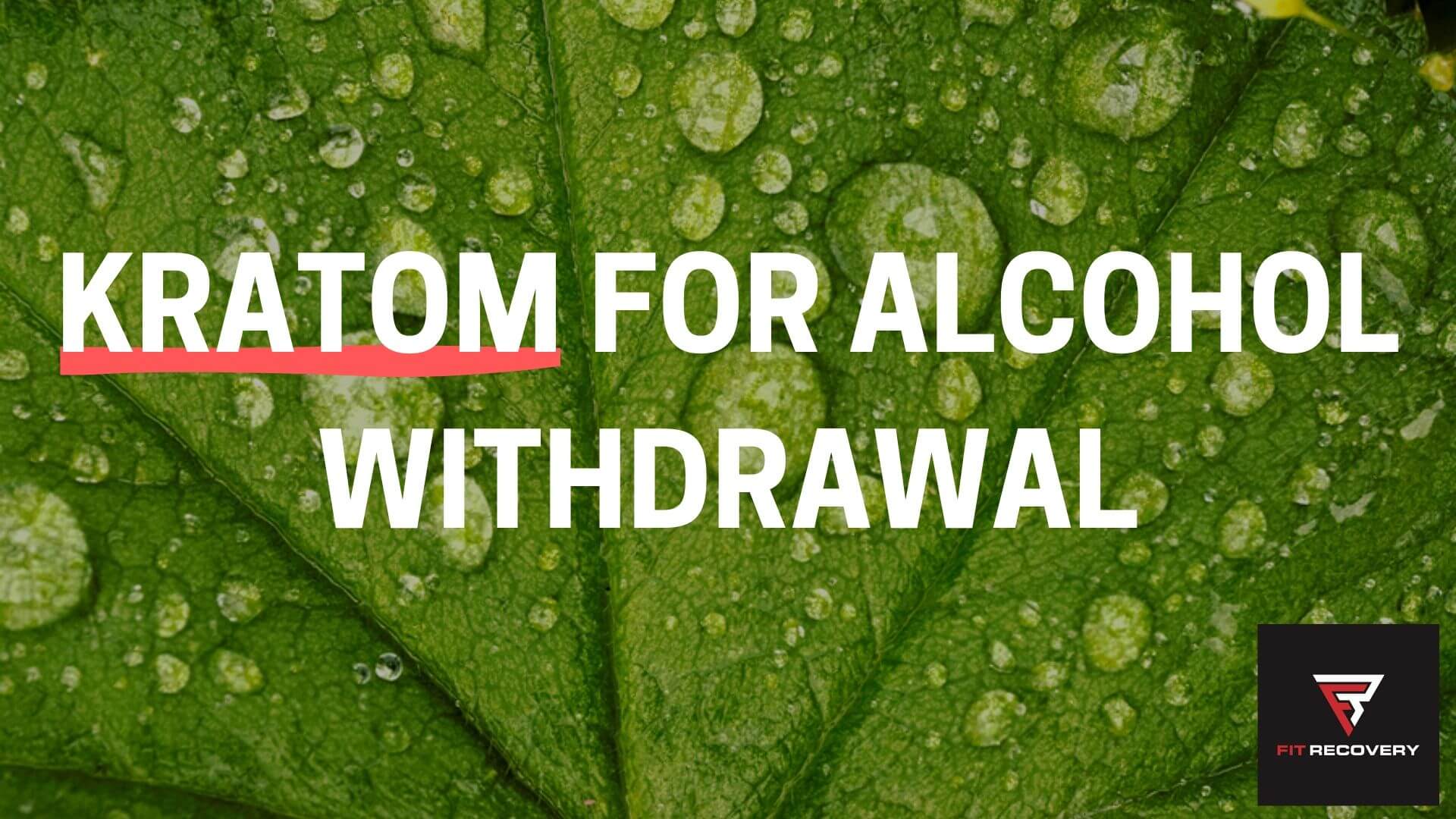
The Internet is full of personal opinions about this plant. But there are very few in-depth accounts about how kratom can help people cut down on or quit drinking. This article may be the first of its kind.
Let me begin by saying that I had never heard of kratom when I quit drinking. Years ago, I had searched for a natural plant that might provide some relief from withdrawal symptoms and especially cravings. I tried GABA supplements with no success and had limited success with kudzu root.
If I had known about this plant before I detoxed, I would have ordered a high-quality powder and made some tea. Many people who have done this have reported that they no longer crave alcohol after about a week.
In fact, popular message board sites like Reddit are now filled with the experiences of people who are amazed by their ability to cut down on drinking, and even quit entirely, with the help of this plant.

Much of our knowledge of kratom at this point is anecdotal, and more research is needed. But I know firsthand that alcohol withdrawal is hell on earth. Anything that may be able to help people feel better during this difficult time deserves to be considered with an open mind.
While severe withdrawal is a medical emergency, kratom may be able to help many people who suffer from mild to moderate withdrawal symptoms.
What Is Kratom?
Kratom (mitragyna speciosa) is an 80 foot tall evergreen that grows in Southeast Asia. A member of the coffee family, this plant is most often found in Thailand, Indonesia, and Malaysia.
Its leaves have long been chewed or made into tea by people in these countries, who discovered that they could relieve pain and increase their energy levels without side effects. It is known for being incredibly effective for relieving withdrawals from opium. Opium addicts often switched from opium to kratom and then simply quit chewing or drinking it.
In fact, the government of Thailand banned it in 1943 because it was interfering with their profits from the opium trade. While it is still illegal in Thailand, the government is considering reversing the ban to help its population combat widespread drug addiction. (source)
In 2016, the American DEA announced plans to classify kratom as a Schedule I banned substance. In response, tens of thousands of people – including war veterans with PTSD, elderly people with arthritis, and professionals recovering from pain pill addictions – petitioned the government and successfully defeated the proposed ban.
Prematurely banning kratom would have also made research on it illegal, thereby shielding Big Pharma from the threat that science might vindicate it and chip into the sales of pain pills like oxycodone and maintenance drugs like methadone. Herbs can’t be patented, and that sucks for Big Pharma. But it’s becoming clear that draconian bans on plants with medicinal value are simply incompatible with the era of the Internet.
Before we move on, consider these interesting facts about kratom use in America:
- 4-5 million Americans use this plant
- 82% of users are between 31 and 50 years old
- 30% of users make more than $75,000 per year (source)
Millions of Americans have already used kratom to get off opiates and other drugs. There have never been any deaths solely attributable to it. Now let’s look at its potential as a home remedy for dependence.
How It Works
Unlike pain pills that kill tens of thousands of Americans each year, kratom is not an opiate.
The main alkaloid is called mitragynine, which is a partial opioid agonist. (Kratom is often referred to as mitra tea.)
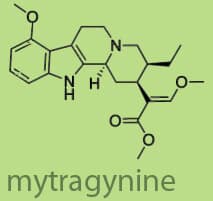
Kratom binds partially to some of the opioid receptors in your brain. When it does this, it provides mental stimulation and/or pain relief, depending on how much you consume.
It binds less potently to brain receptors than medications like oxycodone, heroin, and methadone. These three substances are full opioid agonists, meaning that they fully activate the brain’s opioid receptors and create a very powerful (“full”) opioid effect.
The difference between this and full opioid agonists can be better grasped once we clarify the difference between the three main types of opioid receptors. Mu, kappa, and delta opioid receptors have different effects when activated, with all of them offering varying degrees of analgesia (pain relief).
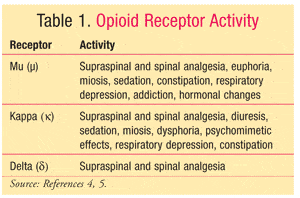
Full opioid agonists like morphine and fentanyl bind to all of these receptors, with a preference for the mu receptors. Methadone binds powerfully to the mu receptors. The mu opioid receptors are most associated with severe opioid addictions.
Kratom, as a partial opioid agonist, binds primarily to the delta receptors. It only activates mu and kappa receptors in large doses.
It therefore mimics the more pleasurable effects of opiates (including endorphins), without activating a severe addiction by binding fully to your opioid receptors.
How Kratom Alleviates Cravings
So, what do opioid receptors have to do with alcohol?
Using kratom for alcohol withdrawal may help stimulate opioid receptors that scream for endorphins (the brain’s natural opiates) that are released by drinking.

This is the mechanism by which it can defeat cravings and lessen the pain inflicted by withdrawal. Since other neurotransmitters including GABA are involved in withdrawal, this plant may be helpful for those with mild or moderate alcohol dependence, but not sufficient for severe alcoholics.
If you’re experiencing severe withdrawal, you will need anti-convulsant medications that can prevent seizures caused by low levels of GABA and high levels of glutamate.
With that said, I will now explain the relationship between addiction, opioid receptors, and the potential for kratom to help with withdrawal.
Alcohol affects many neurotransmitters – it mimics GABA, while increasing dopamine, serotonin, and endorphins. Endorphins are the brain’s natural opiates, and there is speculation among scientists that addicts metabolize alcohol differently – that their livers or brains turn alcohol into an especially potent opiate called THQ. This compound has been found to be multiple times more powerful than morphine.
Even if the THQ hypothesis is exaggerated, there’s no doubt that our brains release painkilling endorphins in response to alcohol. Moreover, it’s clear that alcoholics are addicted to this endorphin release. Research has shown that mice that have been genetically engineered to lack mu opioid receptors are much less prone to the addictive rewards of alcohol. (source)
In a sense, alcoholics are addicted to opiates – not external ones, but those produced within their own brains that are released by their consumption of alcohol.
People who gradually switch from alcohol to kratom can often avoid the pain of withdrawals by stimulating these endorphin centers with it instead of alcohol.
Since this plant is inherently less addictive than alcohol, many of these people then have a much easier time getting off of it. There are very few plants with the ability to destroy cravings, yet it seems to be one of them. (source)
In what might be considered the opposite strategy, The Sinclair Method involves taking Naltrexone, a drug that blocks the brain’s opiate receptors. With natural endorphins blocked, the alcoholic can no longer take any pleasure from drinking. Because there are many neurotransmitters involved in addiction, it can take months for the drinker to cut intake to negligible levels. But it’s worth noting that this treatment targeting opioid receptors for alcoholics has an 80-90% success rate.
I had never heard of either The Sinclair Method or kratom when I quit drinking. While the former strategy is much better established in medical circles (especially in Europe), the kratom method holds more appeal for me because I do not like the idea of blocking endorphins that I can get from exercise, delicious food, and everything else that life has to offer. Years ago, I would have jumped at the opportunity to try a tea that alleviates the stress and pain of quitting.
To be clear, I would have had to use kratom before I experienced kindling and severe withdrawal – when I could still stop without the help of an anti-seizure medication.
Is It Addictive?
There have been reports of people who are addicted to kratom.
But after studying this plant and using it myself on numerous occasions, I really believe that it is far safer and less addictive than alcohol, opiates, or even benzodiazepines.
Unlike these other substances, kratom has a self-limiting factor: upping the dosage doesn’t simply make you feel better. There is a natural plateau for the effects of it, and people who intentionally ingest large amounts of it usually end up with a stomachache or a headache.
Most importantly, it is much less toxic than alcohol. It’s dubious as to whether this plant, which contains many other nutrients and compounds, is even toxic at all. There has never been a single credible report of someone dying from an overdose on it alone.
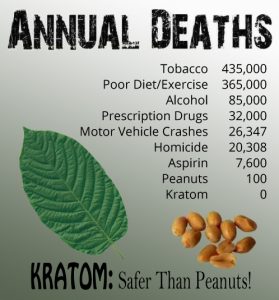
I don’t know if kratom is safer than peanuts, but it’s definitely safer than drinking in my opinion.
As with many other things, daily kratom use increases the risk for addiction. People who use it daily for months or years can experience withdrawal symptoms if they stop. At the same time, many people who have used it to get off opiates or alcohol report that:
- Dependence can be avoided entirely by taking it infrequently
- Withdrawals do not occur for most people who use it on a daily basis
- Easier to taper off of than alcohol or opiates
- Heavy daily users describe withdrawal from kratom as “annoying” but not “debilitating” (source)
You might now be wondering: Why would I use a potentially addictive substance to help me quit another extremely addictive substance?
When I quit drinking, I was prescribed a benzodiazepine called Ativan for two weeks to treat my withdrawal symptoms. Perhaps this process was made easier because physicians controlled my access to this powerful tranquilizer. Every few days my dose was lowered until I was off of the benzodiazepines. The ease with which this took place was interesting to me, because I met many people who were in detox because of their addiction to benzodiazepines like Ativan.
If I had known about kratom before I quit drinking, I would have lowered the dose until I was off of it. Perhaps I would have merely switched addictions and become addicted to kratom instead. From all the accounts I have read, the dependence is more tame than alcoholism, which ravages our brains, distorts our actions and poisons every cell in our bodies.
While reading a fascinating book called Intoxication, it occurred to me that this plant is to opiates as coca leaf is to cocaine. Inhabitants of the Andes in South America have long chewed coca leaves and made them into tea, deriving energy from tiny amounts of what we would now call cocaine. The difference between stereotypical coke addicts and indigenous coca leaf consumers is like night and day.
Leaf-chewing and tea are the same methods that inhabitants of Southeast Asia have used with it for centuries. There are no coca leaf or kratom “epidemics” among these natives – there have never been any deaths attributable solely to these plants when taken in their natural form. In both cases, respecting natural levels of plant chemicals has proven to be much safer than synthesizing nature’s most potent compounds.
For this reason, it’s extremely important to use the best quality leaf you can find. There have been reports of super-potent extracts, some of which are laced with fentanyl, which is a very powerful opiate.
This problem can be easily solved by buying high-quality, fresh, organic powder from a trusted vendor.
Best Brands For Recovery & Stress Relief
Because kratom leaves wilt and go bad quickly after they’re picked, the best option is a powdered form that can be made into a tea or simply mixed with juice. I’ve sampled some from nearly a dozen reputable vendors since 2014.
With that said, I don’t use it daily, weekly, or even monthly. I’m a sporadic recreational user, and I find it to be helpful as either a nootropic and relaxant, depending on the strain. I’m long past addiction and withdrawal, but this plant has helped me with productivity and relaxation, mostly during periods in which I need to get a lot of work done and then wind down at the end of a long day.
As mentioned earlier though, I personally would have jumped at the chance to test out kratom for stress relief – instead of toxic alcohol – back during my heavy drinking days. I believe that it could have saved me from continuing in my downward spiral towards alcoholic rock bottom, especially if I combined it with nutrient repair and holistic strategies to rebuild my body, mind and soul from scratch.
Below is my continually revised and updated “Top 3” list of vendors, which are all safe and reputable:
1) PurKratom
I’d gotten busy with life and nearly forgotten about kratom for about a year, until a friend recommended that I try this particular brand a month ago. I ordered their Green Maeng Da powder, which this company suggests using as a mood booster.
All of their products are organic and pure, not cut with any other compounds. Their products are broken down into 3 categories: energy, recovery, and mood.

I prefer powder because my tolerance is low, and I like to consume it slowly by mixing it with hot water and stirring occasionally with a spoon. Some experts speculate that the active compounds, or alkaloids, in this plant are best activated when mixed with hot water.
Simply put, I LOVED PurKratom’s Green Maeng Da strain more than any other I’ve tried. I used to recommend a red strain from a different vendor, but this one wins hands down for the following reasons:
- Unlike strains from other vendors that made me feel either overstimulated or spacey, I felt a useful combination of steady euphoria, relaxation, and focus
- The taste is mild and not as bitter as other vendors’ products: a bit like matcha green tea
- The pleasant effects from using just 1/2 teaspoon mixed in hot water lasted for about 4 hours, nearly twice as long as my typical experience
- There was no noticeable “comedown” after this strain wore off, just a comfortable return to baseline
- I slept much deeper than usual and felt rested in the morning, which is a nice contrast to the slight “burned out” feeling I’ve experienced in the AM after using other vendors’ products
- The price is reasonable – about $15 for a container of powder – and I prefer PurKratom’s containers to the messy, hard-to-close plastic pouches that most vendors use
In addition to the Green Maeng Da kratom, which is my favorite, I also recommend trying their reasonably priced variety packs. Because everyone is biochemically different, you may find that you prefer a different strain. The only way to find out is through trial and error, which is fun anyway.
I was so impressed with PurKratom that I reached out to them to ask for a coupon code that I could share with you.
They replied promptly and agreed, so be sure to use code RECOVERY for 25% off of your order!
- Click here to visit Pur’s website
- Navigate to the bottom and click “Shop All”
- Select your desired products (I like the Green Maeng Da & variety/beginner packs)
- Use coupon code RECOVERY to receive 25% off your order
- PurKratom has frequent promotions, so check out their Black Friday Sale for a chance to get special prices and win a free keurig
Here’s a brief video I made about my experience with PurKratom:
While PurKratom is my new favorite, I want to share a few other brands that I’ve recommended in the past.
2) Top Extracts
Top Extracts is a solid brand with a great reputation, and it was my go-to for many years. I sampled many products from this company, including their red, green, yellow, and white strains.

Here are my reviews of two of my favorite Top Extracts products:
- Classic Red Bali (red vein) – I took about 2-3 grams and experienced some heavy relaxation that lasted for about an hour. This was my go-to strain for parties when people were drinking and I felt like letting loose a bit. Months after trying it for the first time, I took 8 grams of this strain to assess negative effects, which I assumed would happen at this dose. Instead of experiencing anything bad, I simply crawled into bed and fell asleep. However, I did feel a bit lethargic during my sprints the next morning.
- White Borneo Mitra (white vein) – This strain made me feel motivated to get stuff done. Although I used about 4 grams, sipped over the course of an hour or so, it seems a bit milder than the red bali. Months later, I tried 8 grams of this strain, and I felt like I’d had about 6 cups of coffee. I was hyper-aware for about 30 minutes, which was not pleasant. This is not the fault of this vendor or strain: kratom is all about balance, and less is often more. Take care not to overdo it!
One of the main complaints from “my people” – in other words, members of my online course – was that Top Extracts was often out of stock for various products. This issue may have been fixed though, as it’s a solid company that has continued to expand and thrive over time.
3) Happy Hippo Herbals
Happy Hippo Herbals is another popular brand that many people love. I tried some of their green strains and red strains a long time ago, and I found them to be high quality but a bit unpredictable for me in terms of effects.
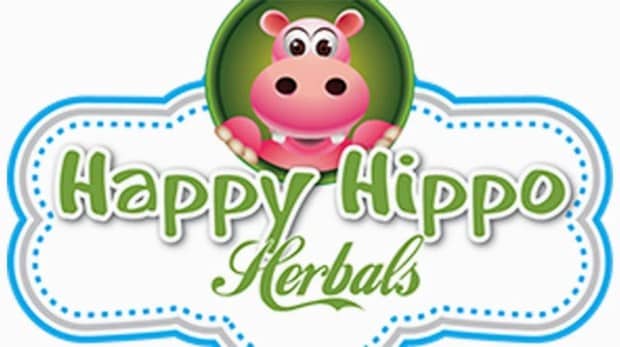
The prices are high compared to other vendors, perhaps because theirs is quite potent. As a sporadic user, I’ve never built up much of a tolerance. After sampling their green strain, I felt overstimulated and could barely finish 1/4 teaspoon.
I know people who consume it frequently and prefer this brand. If you have a particularly high tolerance for it, then perhaps this is the brand for you!
Further Considerations
Even when you obtain kratom from a trustworthy vendor, the plant can produce different effects depending on:
- Which strain is used
- How much is consumed
- Your individual biochemistry
Additionally, there are three main types of kratom and each is generally associated with a different effect:
- White Vein: Stimulating
- Red Vein: Calming
- Green Vein: Calming and/or stimulating
- Yellow Vein: Calming and/or stimulating
Trial and error is the only way to determine what kind will best alleviate your symptoms. Some people find that the red vein stimulates them and that the white vein calms them. I have a friend who prefers a blend of red and white veins, and who dislikes the green vein because it makes him anxious. The number of different strains can seem confusing, but if one doesn’t work for you, it’s very likely that another one will.
It’s important to use the smallest effective dose possible. For first-time users, this amount is generally 2-3 grams. However, some people require between 5-10 grams to feel any effects.
My Overall Experience
For me, the effects mimic the euphoria and confidence that comes from drinking, minus the inebriation, poor judgment, and emotional swings. And of course – minus the hangover!
I have a passion for sampling natural remedies that might be able to help people get through what I once endured.
Because I used a relatively low dose each time, the effects were mild but much more noticeable than with coffee or herbal teas. These effects included:
- Enhanced sense of well-being in the moment
- Pleasant vibrations in my bones
- Enhanced focus and creativity in my writing after a few sips
- Happy/sleepy state after finishing a batch
Strangely, it seems that a little bit of either red vein or white vein puts more pep in my step. More than that makes me feel happy and sleepy. I’m already happy, and I don’t want to feel sleepy until bedtime. But I know that this isn’t the case for everyone: I’m not enduring withdrawal.
I did feel a bit groggy after consuming red vein from the first vendor I tried. After using this same vendor’s green vein, I felt restless and uncomfortable for about 10 minutes. I concluded that perhaps kratom didn’t agree with my biochemistry. I’m really glad I didn’t give up!
With the version from PurKratom, I have never felt any grogginess or restlessness. PurKratom is a bit finer/easier to dissolve than the other places I’ve ordered from, which were also organic but more clumpy.
There are many strains that you can explore for yourself.

I once used it every day for two weeks, rotating different strains to gauge their effects and to avoid building a tolerance to any specific strain. I was concerned that I might suffer from minor withdrawal symptoms when I stopped.
Instead: Nothing. The only difference I noticed was that I felt more clear-headed once I was off of kratom. Because I’ve proactively repaired my brain and body since quitting drinking, I don’t need any help feeling good most of the time.
I recently drank tea containing 4 grams of Red Bali before a wedding reception and felt relaxed and mildly euphoric while other people’s behavior deteriorated. I woke up hangover-free and got an awesome workout in.
My experience contradicts the view that alcoholism is an all-encompassing spiritual defect. At no point while using kratom have I felt out of control. At no point have I felt inclined to drink.
At no point have I reevaluated my belief that alcohol is a toxic waste of time and vital life force, empowered only by collective groupthink that can be rejected once you allow yourself to see how silly it is.
How To Prepare
Some people simply mix kratom with grapefruit juice, which potentiates (enhances) its effects. However because the leaf is not easily digested, this method can also be hard on the stomach for some people. I decided to spare my stomach any potential trouble and make tea instead.
It may be helpful to know that 1 teaspoon of it is 2.3 grams, and one tablespoon is 6.2 grams. (source)
However, I used a cheap digital scale to measure exactly.
My tea method is simple and involves a French press:
- Boil 3-6 grams of kratom with about a liter of water in a pot for 10 minutes
- Pour the contents of the pot into the French press
- Easily filter out the plant matter using the French press
- Sip slowly until you feel an effect
A French press can be found at many stores including Target. I got this one for only $17 from Amazon and I use it to make Yerba Mate every day.
If you use more than a few grams, a serving can last for two steeping sessions. The last time I made the tea, I poured the first batch into an ice cube tray to see if it would preserve. I then consumed the second batch slowly over the course of an hour while I wrote.
A few weeks later, I put three kratom ice cubes into my evening chamomile tea. My roommate had a few ice cubes as well. The effects were definitely there!
Like many herbs containing natural alkaloids, the plant is bitter. It is an acquired taste and I did not mind it. If you have picky taste buds, some stevia powder and lemon juice might help to improve the flavor.
4 Steps to Quitting Drinking
If I could go back in time by five or six years and inform my addicted self about this plant, I would be cautious yet very optimistic.
Look, Old Me: Here is a natural plant that can help to lift the dysphoria of cravings and the pain of withdrawal. Use it as needed and take care not to use too much for too long, for it stands to reason that anything that actually works this well has potential for abuse.
Because alcohol activates GABA receptors that essentially freak out when you quit cold turkey, I would use small doses of it to help me taper off of liquor.
Most people can tolerate small doses of kratom along with alcohol. If you’re ready to learn how to use it to free yourself from the ravages of addiction, then read on.
-
Step 1: Order Kratom and a Multi-Nutrient Formula
On the PurKratom website, select Green Maeng Da powder, and any other strains you’d like to try. The variety or beginner’s packs are good bets too.

Taking a Multi-Nutrient Formula in conjunction with kratom can help your brain-body system rebalance much more quickly as you quit alcohol. You can read my reviews of multi-nutrient formulas here.
Use trial and error to determine which type of kratom works best for your symptoms.
-
Step 2: Write Down A Drinking Tapering Schedule
Be 100% honest with yourself about how much you drink. Plan to cut your drinking down to zero by one drink per day.
Five or six years ago, cutting down in this way would have taken me around a week or two.
Drinking tapers are notoriously ineffective without biochemical support. This is why we will be using both kratom and a Multi-Nutrient Formula to make this process easier.
-
Step 3: Start Taking Kratom and a Multi-Nutrient Formula
Once your supplements arrive, you can execute your plan. You will now:
- Begin your drinking taper
- Begin taking kratom tea
- Begin taking a Multi-Nutrient Formula
Prepare your kratom as described above before you start drinking for the day. Only you can determine which strain, if any, can help make the process of tapering off booze easier.
Once you have selected a strain that agrees with your system, adjust the amount to combat any cravings, dysphoria, or anxiety that arise as you cut down on alcohol.
Know that if you take a big dose and start slamming drinks, you’ll probably feel sick. The only way to use this method is to achieve a delicate balance.
If you can follow this process as described, don’t be surprised if you are able to stop drinking much more quickly than you expected.
You may be able to discard your taper plan and simply use kratom for 1-3 weeks to resolve your symptoms of withdrawal.
It’s helpful to have multiple strains on hand that work for you. This way, you can rotate them and avoid using the same strain for two days in a row. Rotating strains will help you avoid the “kratom stopped working for me!” problem that arises when people build a tolerance to a single strain by using it every day for days or weeks.
-
Step 4: Finish Your Supplements, Stop Taking Kratom, And Be Free From Alcohol!
Most people who stop taking kratom after a few weeks have no withdrawal symptoms.
Once you get to this point, you will be clean and free!!!

Of course, this does not mean that life will be easy all of a sudden.
External support, nutritional support, exercise, meditation, reframing your perception of drinking, and finding your purpose in life can all help you transcend drinking culture forever.
Find yourself and establish new pathways in your brain for releasing feel-good chemicals that alcohol monopolized for so long.
- Learn more about strategies for personal transformation and quitting drinking in my in-depth online course, Total Alcohol Recovery 2.0.
Honestly, life as a nondrinker is more incredible than I could have imagined years ago.
Conclusion
I hope you’ve enjoyed this article! For even more information, check out my comprehensive article on kratom and alcohol.
I want to emphasize that because everyone is different, nothing I write on this site is a definitive recommendation for anyone.
My goal is simply to provide information about many potential solutions for the physical trap of alcoholism. There is no one-size-fits-all solution, and if you’re as addicted to alcohol as I was when I quit drinking, medical detox is your best bet.
I’m not promoting a lifestyle of daily usage, although I don’t judge anyone who uses it long-term. My favorite highs come from milder herbs like Yerba Mate (using the same French press method as kratom) and a great workout in the sun. If I’m with old friends, I’ll smoke a good cigar. I use meditation almost every day to calm my brain.
These days, nothing feels better to me than waking up with a clear mind and feeling at peace with raw, majestic, mysterious reality.
If you have any questions, please leave them in the comment box below.
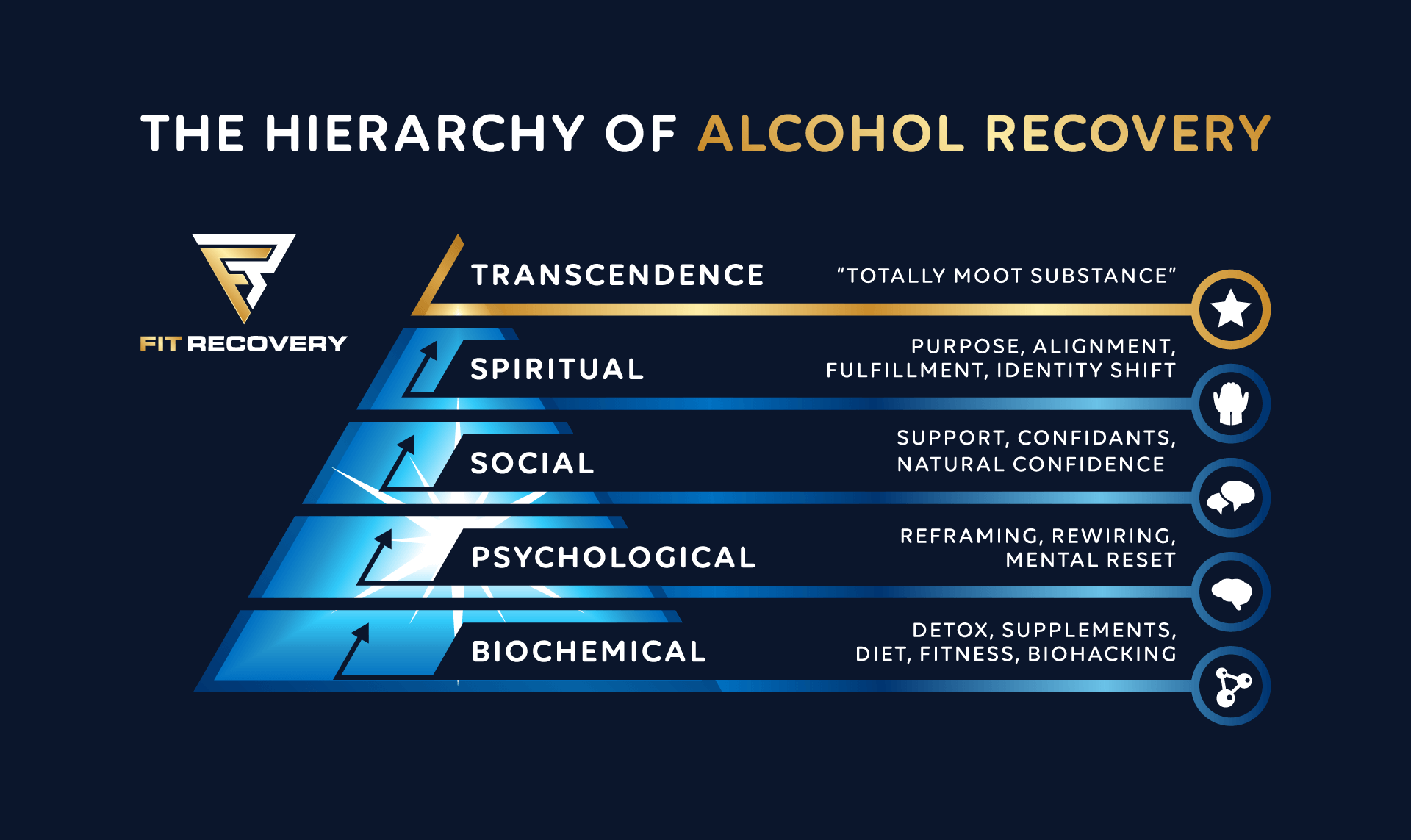
Author
-
A decade+ addiction-free, Chris Scott, the visionary founder of Fit Recovery, passionately guides Fit Recovery 2.0 Members toward a vibrant, healthier lifestyle. Through the integration of groundbreaking nutritional strategies, transformative reframing techniques, neurolinguistic programming, and dynamic pro-recovery habit systems, he inspires individuals to boldly take charge of their lives and break free from alcohol. Chris is celebrated as a Professional Member of the Alliance For Addiction Solutions. Moreover, he is the proud author of the bestselling book "Drinking Sucks!" which stands as a vital beacon of hope for those yearning to quit drinking. Additionally, he created the celebrated online program Fit Recovery 2.0, designed to provide unwavering support for individuals embarking on their recovery journey.
View all posts Fit Recovery Founder & Director



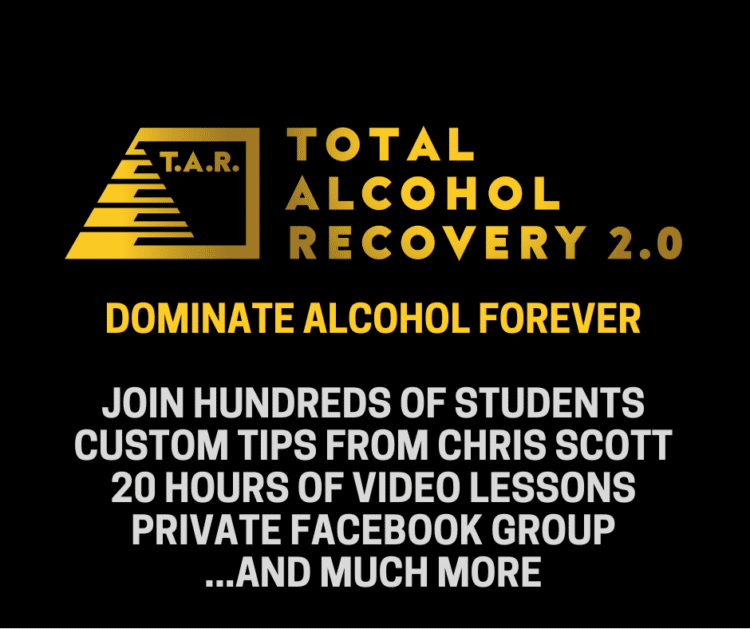

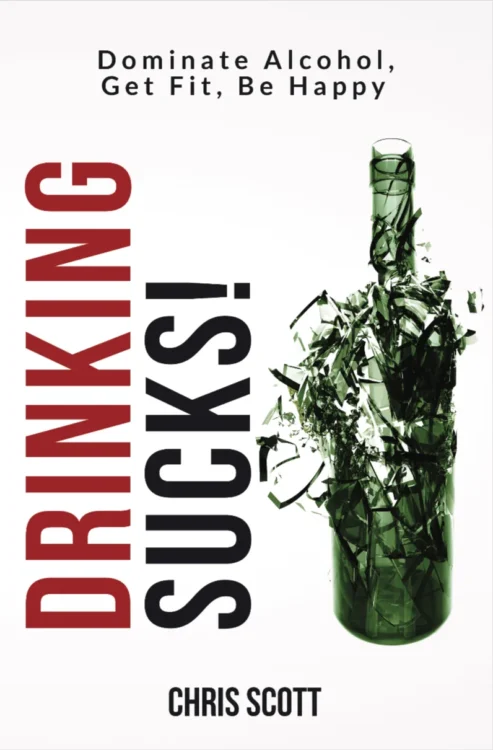
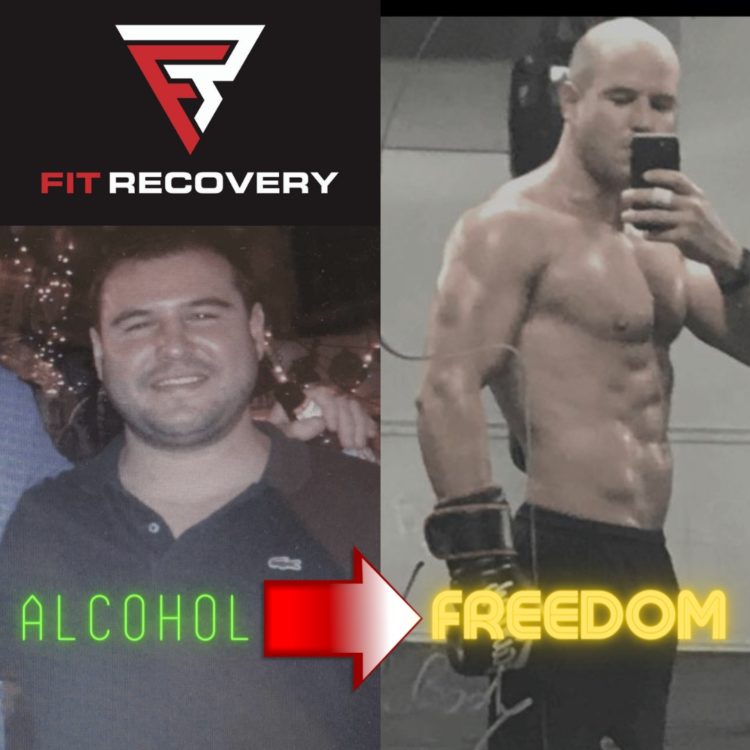
Do you reccomend Kratom along with CBD or just using one?
Hi Nick, everyone is different but many people like using both!
Chris, kratom has helped me tremendously but I have now become dependent on it. I’m taking 10-15grams per day sometimes dosing multiple times per day.
How do you recommend I come off kratom? Do I taper? Will I have withdraws? And any supplements I should take?
Thanks
Tyler
I’m so grateful to have found this. This in-depth insightful article makes quitting feel less daunting and sobriety achievable and with in reach. We have a reputable store in SLC that specializes in Kratom. Thanks you!
You’re very welcome Cameron, best of luck to you!
I have used kratom on and off for about a year and a half. It has done wonders for my depression and anxiety and also helps me focus. I have been on adhd medication since 3rd grade, it has caused a rollercoaster and wrecked my life. Kratom helps some much for my adhd, without the inebriation, anxiety, and adohenia caused from amphetamines. I am also a recovering alcoholic. Kratom SMASHES my cravings, dont even think about drinking. This is a wonder plant with medicinal benifits to it as well. I am thankful I found this, for the fact that i… Read more »
Hey Chris. Just wondering if the capsules are as effective as drinking it?
Hi Brandi, honestly I find making tea to have a stronger effect – I think the hot water may potentiate the alkaloids in the kratom! But many swear by the capsules too.
I’ve been reading alot Abt Kratom and I’ve been slow tapering off opiAtes and want to try Kratom to help me. I was wondering what strain is the best to try first/doses . I’d rather take capsules